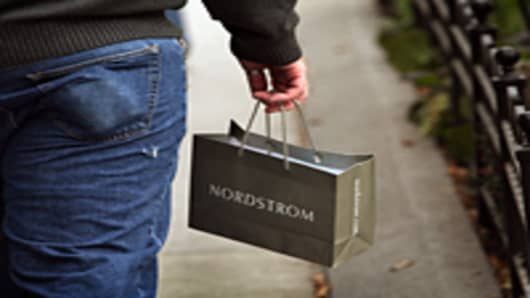Wealthy Americans may appear to the masses as a unified group, but there is divergence in the attitudes of the rich toward holiday spending this year — which means that the key to how the holiday season unfolds may rest in the hands of the wealthiest.
Affluent households, or those who represent the top 10 percent of American wage-earning households, are expected to account for 23 percent of the total 2011 holiday spending this season, according to Harrison Group, a market research firm.
Here’s the surprise: Although forecasts are calling for average — or in a few cases, above average— gains in holiday spending, gift-giving budgets of affluent families are down, according to Harrison’s research. However, among the wealthiest of the wealthy spending is projected to be higher.
The data collected by Harrison Group and American Express Publishingfrom 769 affluent Americans with discretionary household incomes ranging from $100,000 to more than $1 million dollars. It projects an overall decline of $1.04 billion, or a 6.1 percent drop, in plans to give gifts among affluent and wealthy families compared with 2010.
The decline in spending is being led by the consumers who make between $100,000 and $250,000. Those in that income bracket are expected to spend 17 percent less than they did in 2010, according to the study. On the other hand, those at the very top of the income spectrum, with discretionary income of $250,000 or more, plan on spending 7 percent more than they did last year.
Those who are cutting back are not doing it because they are worried about their economic situation, according to Jim Taylor, vice-president of Harrison Group. Instead, he suspects the shift reflects a change in priorities over the last few years, resulting in less emphasis on material goods.
A More Meaningful Christmas
“We’re a lot more mature as a society,” Taylor said. This means there is a desire to have a more meaningful holiday season, with the focus on spending time with the people they care about versus giving or receiving gifts.
“Expressions of happiness are being increasingly decoupled from the desire to acquire more and more things,” he said.
The American Affluence Research Center, which specializes in surveys and mailing lists of the affluent, also found that the wealthiest one percentile of households by net worth will be a pocket of strength this holiday season. The group expects the affluent as a whole to spend about 2.3 percent more than they did last year.
But the AARC is not seeing the same level of happiness that turned up in Taylor’s research. Instead, the group, which also polls a sample of the wealthiest 10 percent of U.S. households by net worth, discovered a record-low outlook for current business conditionsand the 12-month outlook for the economy in their fall survey.
But Ron Kurtz, the center’s president, said the glum mood might encourage more spending.
“The wealthy can afford to brighten their lives by buying nice things to offset the gloomy environment,” Kurtz said.
Luxury Sales Seen Higher
If that is true, it would be good news for online sales, department stores and luxury goods.
Craig Johnson, president of retail consultancy Customer Growth Partners, expects sales of luxury items will rise 12 percent this holiday season, with strength in apparel, accessories such as handbags, and jewelry.
This is one factor in Johnson’s overall opinion that holiday sales will be much stronger than many industry analysts are expecting. (He is expecting retail sales to rise 6.5 percent from last year, which if true would be the best growth since 2004. This compares with the National Retail Federation’s forecast of 2.8 percent increase in holiday sales.)
But luxury sales also are being helped by a new crop of consumers who had previously not spent on luxury at all, but have been responsible for driving a significant portion of luxury spending growth this year, according to Ed Jay, senior vice president of American Express Business Insights.
These luxury newcomers make up about 61 percent of all luxury consumers and are responsible for 36 percent of all luxury spending, Jay said. By contrast, the active luxury spender, who is most likely a baby boomer, was responsible for 68 percent of all luxury spending, and when the recession hit, 25 percent of these consumers stopped spending, he said.
Also, the average consumer has been trying to spend more up-market and that has helped the luxury goods market, Jay said.
And that points to a growing perception that affluence doesn’t mean what it used to. An affluent consumer may not be someone who has enough expendable income to buy more goods; it may be a person who is so dedicated to a particular category that they are spending on those goods.
We’ve seen this behavior during the recession, as consumers cut back on nearly everything —but some still found the money to buy new gadgets such as iPhones and iPads.
All this means that if affluent consumers do focus more on experiences rather than goods, the luxury market still may see a strong holiday.





